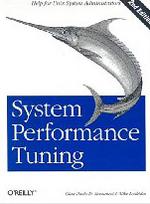

Дата отгрузки на данный момент неизвестна.
Товар закончился у основного поставщика, и, после получения заказа от вас, мы закажем его у других поставщиков. Мы не можем гарантировать выполнение данного заказа, поэтому настоятельно не рекомендуем заказывать данный товар, используя предоплату (банковский перевод и т.п.). Заказ на такой товар действителен в течение 3 недель (если в течение 3 недель товар не придет, заказ будет отменен). Однако, это не означает, что товар нельзя заказать вновь, поскольку в некоторых случаях возможны и более поздние поставки.
Технические характеристики
The easy way to solve a performance problem--and the one to which hardware manufacturers love to call attention--is to apply more horsepower to the application in question. It\'s safe to bet that a server upgrade will speed things up. True information technology professionals, however, won\'t take the easy way out when dealing with an increased workload for older systems. They\'ll do their best to wring top performance (with required reliability) from existing hardware, thus improving their organizations\' return on capital investment and demonstrating their own engineering skills. The second edition of System Performance Tuning offers advice on where to look for bottlenecks in applications--both local and networked--that run under Unix. It also offers advice on provisioning new systems, which is to say it offers advice on deciding how much computing power is enough for a new system to be implemented.
Emphasizing Solaris 8 and, to a lesser extent, Linux, the new version of this book represents a significant revision (the first came out in 1990 and was pretty badly obsolete). There\'s coverage of advances in hardware--multiple processors, RAID storage, faster and cheaper memory, and networked devices--as well as consideration of changes in the demands placed on machines (after all, few people were concerned about Web server performance in 1990). Administrators will get plenty of value from the authors\' discussion of what goes on during, for example, a series of large store-to-disk operations, and be better able to optimize their systems. --David Wall
Topics covered: How to get top performance from computer systems (those running Linux and especially Sun Solaris 8) without adding processor capacity, memory, and other resources at potentially great expense. The authors explain the ways in which operating systems and applications use processors, memory, persistent storage, and networks, and point out potential bottlenecks. They also show how to use tools--such as execution timers--that you can use to benchmark performance changes.